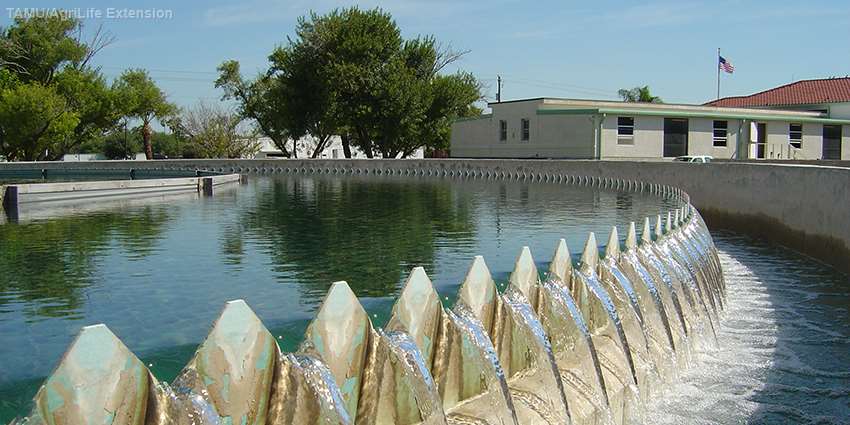Article originally written by Kerry Halladay
The phrase “mirror of society” often conjures up lofty human pursuits like art and literature. But there are other, less flattering, human products that should come to mind.
“Sewage is a mirror of society,” asserted Dr. Gertjan Medema. “For a virus’ prevalence in a community, I think sewage is also useful as a mirror.”
Medema, principle microbiologist at the KWR Water Research Institute in Nieuwegein, The Netherlands, spoke during the “Water and COVID-19” webinar hosted April 30 by the International Water Resources Association (IWRA). He was also the lead author on one of the first studies that used sewage surveillance to track SARS-CoV-2, the virus that causes COVID-19.
While looking for SARS-CoV-2 in sewage might sound novel and has been getting increasing attention from the mainstream news media, the practice of wastewater surveillance for viral infections (among other things) is not. It has been going on for over 75 years in the United States, starting with researchers looking for poliovirus in the sewage of New York City, Chicago and other cities in the early 1940s.
Wastewater surveillance for viral infections works because people excrete biomarkers for some (but not all) viruses via their feces. Researchers can look for those biomarkers in samples of raw sewage using molecular analysis just like in clinical testing.
“We have not developed something special for sewage; we just copy-paste clinical testing and apply it to sewer testing,” said Medema of the process during the webinar.
Dr. Kristina Mena, Dean of the UTHealth Houston School of Public Health in El Paso, described wastewater surveillance as a modeling tool, but it is a targeted approach that requires a lot of information. Researchers must know what they are looking for, she explained.
“Wastewater surveillance is another way to estimate infections in a community based upon what people have excreted. But then you must have a good understanding about the particular pathogen. How soon do we expect someone to excrete that hazard in their stool if they are positive? How much viral RNA — the genetic material — is excreted in feces from infected people?”

The answers to those questions differ for different viruses. But, if researchers know some of that key information plus details about the virus’ stability in the sewage system, population served and environmental impacts to the sewage system, they can make estimates about infection rates within a community. And, since viral fecal shedding often starts several days before symptoms appear in an infected person, wastewater surveillance can be used as an early warning system.
“Routine monitoring of wastewater could estimate infections that are circulating or potentially transmitting within a community before someone shows severe enough symptoms to seek medical treatment and are noted by public health officials,” said Mena.
“The difference there could be as long as a week or two, and that’s huge when you’re trying to subdue an outbreak or implement mitigation strategies.”
Similarly, since viral fecal shedding can and often does happen with people who do not show symptoms, wastewater surveillance can offer a clearer picture of what is going on in a community.
“Looking at wastewater — and not just a snapshot, but over time to get a representative sample of what’s happening in the community — could then provide more information because it will capture everybody. It will capture those who are asymptomatic and then excreting into the wastewater system,” said Mena.
Wastewater surveillance and COVID-19
Looking a respiratory virus in sewage might seem a little out of place. However, since researchers around the world have found genetic material of SARS-CoV-2 in sewage, wastewater surveillance is gaining attention as a potential tool in the toolbox to fight the COVID-19 pandemic.
Early work by Medema’s team suggests that wastewater surveillance could indeed work as a sensitive early warning system for SARS-CoV-2.
“We started sampling our wastewater when we saw the virus was in Italy and not yet in the Netherlands. We didn’t find the virus then,” he explained of the study. “We found that it worked as the epidemic entered our country. In two cities we found [the virus] in wastewater six days before the first recorded cases.”
It is important to keep in mind that researchers finding SARS-CoV-2 genetic material in sewage does not mean they found the intact, infectious virus in sewage. Though new information comes in every day, as of publishing, researchers have not found infectious SARS-CoV-2 in sewage. A team of Chinese researchers associated with the country’s Center for Disease Control and Prevention have reportedly isolated infectious virus from an COVID-19 patient’s stool sample, which means it is possible.
At this point, however, it is unknown how well or if infectious SARS-CoV-2 could remain stable in wastewater systems.
“What do we know right now?” asked Dr. Rosina Girones, professor in the Virology and Biotechnology Department of Genetics at the University of Barcelona, who also spoke at the IWRA webinar.
“Not much, but because this virus is 80% similar to SARS-CoV-1, maybe it has some things in common with other coronaviruses,” she said, referencing the virus that caused the SARS (severe acute respiratory syndrome) outbreak of 2003 in Asia.
Girones explained that earlier coronaviruses have been found to be stable — intact and infectious — in wastewater for 14 days at 39 degrees Fahrenheit and around two days at 68 F. She also noted that, while researchers still have many questions about SARS-CoV-2, what they know about other coronaviruses is helpful. Possibly hopeful.
From past research on SARS-CoV-1, the new virus is likely to be less abundant in sewage than enteric viruses, Girones said. “And it should be less resistant to wastewater treatments to be sure.”



